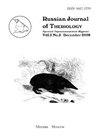Comparative estimation of some immune parameters in three felid species
IF 0.6
4区 生物学
Q4 ZOOLOGY
引用次数: 3
Abstract
Pallas’ cat inhabits dry steppes in the center of Asia where winter temperatures may drop below -50 °C. We suggested that the evolution in severe climatic conditions and costly adaptations to low ambient temperatures may result in decrease of immunity of this species, because it prevents acquisition of adequate resources to develop robust immune responses. We estimated humoral immune response to a non-replicating antigen (sheep red blood cells) in ten captive Pallas’ cats, twelve domestic cats and six Far Eastern wildcats. Blood-sampling was conducted prior to and 21 days after the injection. We analyzed changes in body mass, number of leukocytes, IgG concentration and hemoagglutination/hemolysis titer. Pallas’ cat had lower hemoagglutination/hemolysis titer before the injection and showed lower titer than the two other felids three weeks after the injection. These results may reflect a lower level of natural antibodies in Pallas’ cat than in the two other species and, possibly, lower innate immunity of this species. Domestic cats, which were serum positive to feline coronavirus, also showed lower hemoagglutination/hemolysis titer during the experiment than serum negative animals. How to cite this article: Naidenko S.V., Erofeeva M.N., Demina T.S., Alekseicheva I.A., Pavlova E.V. 2019. Comparative estimation of some immune parameters in three felid species //Russian J. Theriol. Vol.18. No.1. P.1–11. doi: 10.15298/rusjtheriol.18.1.01.三种猫科动物某些免疫参数的比较估计
帕拉斯猫生活在亚洲中部干燥的草原上,那里的冬季气温可能会降到零下50摄氏度以下。我们认为,在恶劣气候条件下的进化和对低环境温度的昂贵适应可能导致该物种的免疫力下降,因为它阻止了获得足够的资源来发展强大的免疫反应。我们估计了10只圈养的帕拉斯猫、12只家猫和6只远东野猫对一种非复制性抗原(羊红细胞)的体液免疫反应。分别于注射前和注射后21天采血。我们分析了体重、白细胞数量、IgG浓度和血液凝集/溶血滴度的变化。注射前,帕拉斯猫的凝血/溶血滴度较低,注射后三周,其滴度低于其他两种猫。这些结果可能反映了帕拉斯猫的天然抗体水平低于其他两个物种,可能是该物种的先天免疫力较低。猫冠状病毒血清阳性的家猫在实验期间的凝血/溶血滴度也低于血清阴性的家猫。本文出处:Naidenko s.v., Erofeeva m.n., Demina t.s., Alekseicheva i.a., Pavlova E.V. 2019。3种野田种某些免疫参数的比较估计//俄罗斯J. Theriol。研究概述。第一。P.1-11。doi: 10.15298 / rusjtheriol.18.1.01。
本文章由计算机程序翻译,如有差异,请以英文原文为准。
求助全文
约1分钟内获得全文
求助全文
来源期刊

Russian Journal of Theriology
Agricultural and Biological Sciences-Animal Science and Zoology
CiteScore
0.90
自引率
33.30%
发文量
0
期刊介绍:
The Russian Journal of Theriology publishes papers on all aspects of mammalian biology: taxonomy, zoogeography, ecology, behavior, morphology, development, physiology, paleontology, and evolution. Studies of extinct as well as extant taxa are included. Reviews are also published; these may be invited by the Editorial Board.
 求助内容:
求助内容: 应助结果提醒方式:
应助结果提醒方式:


